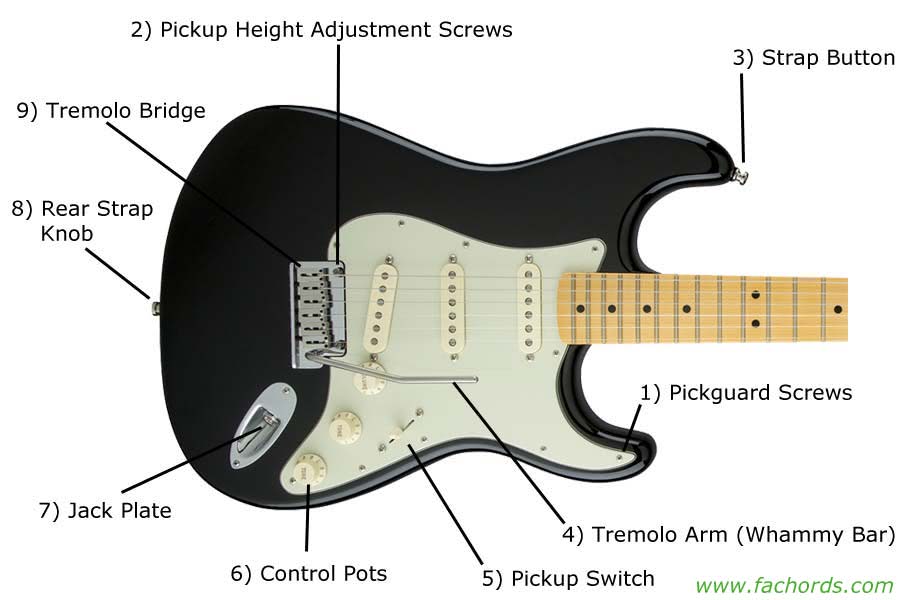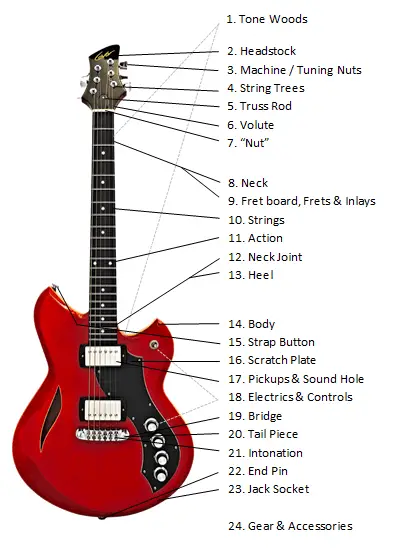

The below diagram shows two different acoustic guitars with the parts labeled. The main point to remember is that all guitars start out with these main parts. We will dig deeper into each part later on. While all have a head, neck, and body, the shape, features, and design are all different across the guitars. While all of the above guitars have different parts, design, and features, the main parts are the same.Īll of the above guitars have three main parts:Īs you can see, there’s a lot of differences between the above guitars. The below diagram shows the main parts for a range of both acoustic and electric guitars. Here’s a look at MI Online’s Scott Henderson demonstrating how he has mastered the guitar.21.1 Related Guides and Lessons: Main Parts of the Guitar

Understanding the different parts of a guitar is the first step towards mastering the instrument. Fingerstyle guitarists prefer plucking strings with their bare fingers, or grow their nails slightly longer to create a stronger and more clearly defined sound. Picks vary in thickness and in some cases material. The strings are numbered from bottom to top with the bottom one being the thinnest.Ī pick is a small flat triangular plastic that is used to strum the guitar. Nylon strings are gentler on the fingertips, and is often the guitar of choice for many fingerstyle guitarists. Acoustic and electric guitars all have strings made of steel while classical guitars have strings made of nylon. Strings can be made from either steel or nylon. The headstock is the most sensitive part of the guitar and should be handled with care. The model and manufacturer’s name can also be found on the headstock. Each string is tuned to a different note depending on the type of music being played and the musician’s preference.ĮADGBE (top to bottom) is the standard tuning on any guitar, and it is done by adjusting the tuning keys. The headstock consists of tuning keys around which the strings are tightly wrapped. The headstock can be found at the top of the neck. Some guitars have a truss rod inside the neck for better stability, and helps keep it steady during weather changes. Most guitars have inlays on the frets to indicate which fret number is being played. The tuning of the guitar determines the note played by each fret. The neck is divided into slots called frets a string strummed while pressed down on a particular fret plays a certain note. The neck is where the finger movements take place across the string.

In electric guitars, the pickups are present in the region between the bridge and the neck. Both ensure that the strings are held in place. The guitar also consists of the bridge and the tailpiece. Electric guitars can have single cutaway, like the Les Paul, or double cutaway like the Stratocaster. The body can be hollow, semi-solid or solid, depending on the artist’s choice and where the guitar will be used the most.Ĭutaway and rounded are the two common body shapes found in acoustic guitars. Different types of wood produce different sounds. It is made from different types of wood such as rosewood, maple or walnut. The body is the part of the guitar that consists of the sound box (acoustic or classical guitar) or the different pickup combinations (electric guitar). To get to grips with one of the world’s most played instruments, we take a look at the parts that make a whole lot of great music. The guitar is arguably one of the most beautiful instruments out there, and when you listen to music aficionados describe it, you’d be forgiven for thinking they were describing a fine wine. From headstock to body, we take a look at the different pieces that comprise a guitar.


 0 kommentar(er)
0 kommentar(er)
